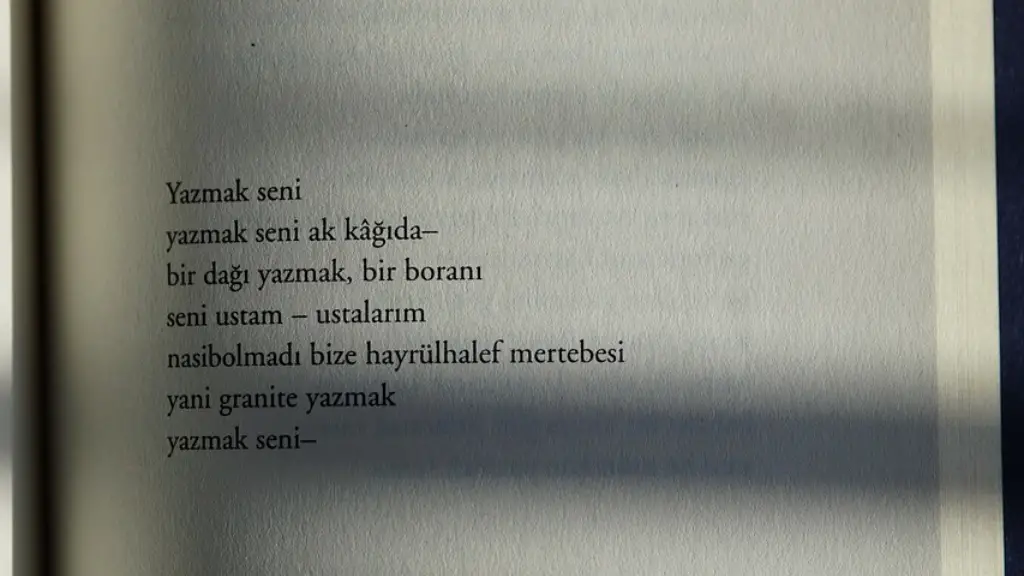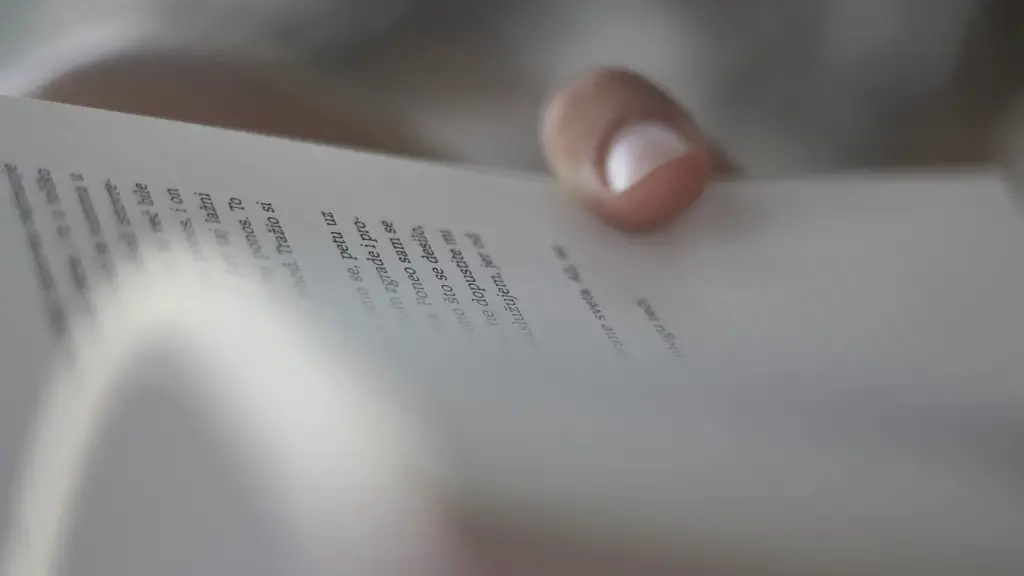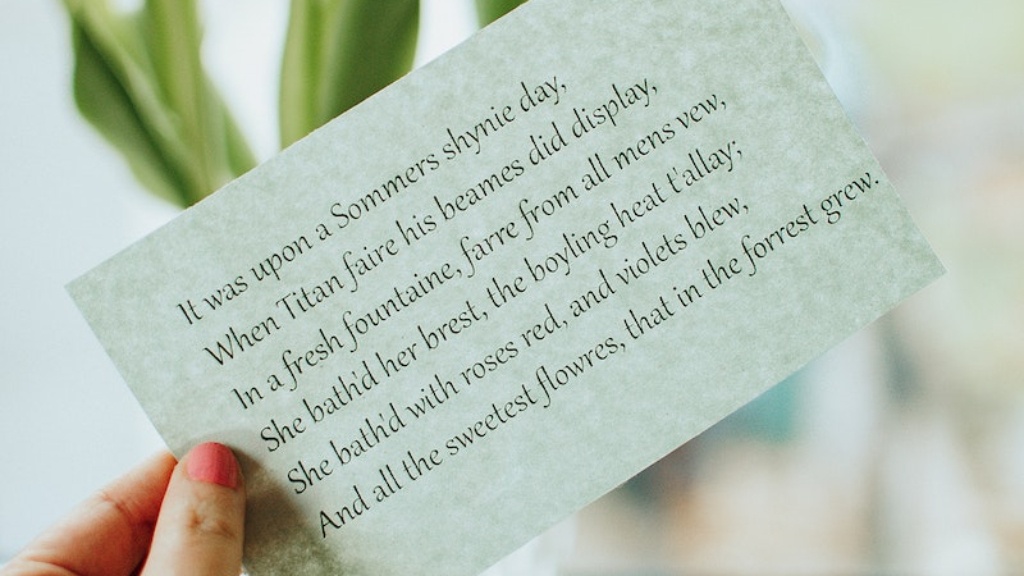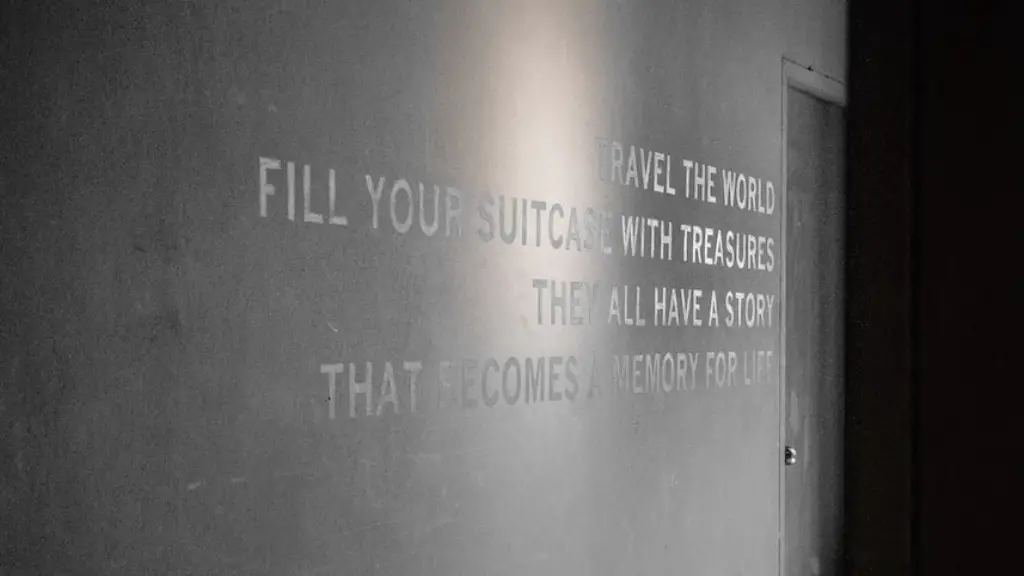A Pause in a Line of Poetry is More than Just Breath
Poetry has been capturing the hearts and minds of readers for centuries. Beyond the beautiful words, there is the art of the language. One element of the language of poetry is the intentional pauses or breaks found within a line of poetry. Often, the pair of words that exist on either side of the pause are complete in themselves, but become a new entity when read together and broken up by a pause.
The first use of intentional pauses in poetry goes back to the classical works of Horace and Virgil. Ancient rhetoricians believed that it was necessary to shape the poem’s effect on its readers by inserting pauses. This was because they understood that a pause was not just a momentary break in the text, but a way to control the reader’s experience by affecting the speed and rhythm of the words.
John Hollander, a renowned authority on the use of pauses in poetry, summed up how a pause can improve interpretation of a poem. He states, “The effect of a pause comes when our experience and understanding differs from what was expected—when the pause between two sounds or two lines creates an echo and therefore changes their relation…For if a voice pauses and allows an echo of earlier sounds and words to occur, then these that were familiar become new and strange in the moment of re-hearing.”
In a metaphorical sense, poetry exists in both the written words and in the pauses. The way that a poet chooses to divide their words into lines and the pauses among those lines isn’t just a practical decision, but rather one that holds a great deal of importance in creating a meaningful and powerful poem.
Robert Pinsky, an acclaimed American poet, believes that “pauses are a huge part of what makes a poem good or bad. Without pauses a poem becomes a dense block of text that can quickly lose its impact on the reader. Instead, strategic pauses can redirect the flow and meaning of the words and hook the reader’s attention.”
Additionally, if pausing is well placed, a line of poetry can subliminally strike a chord with the reader even before the full meaning is clear. Pause-filled poetry allows the reader to connect with the poem on a deeper, more personal level. When strategically used, the pause can add a layer of intrigue and create a space for the reader to make the connection on their own.
Understanding the Types of Pauses
Pauses can be broken down into two different categories; punctuation which is determined by the poet him or herself, and the spaces that exist between words.
A poet chooses whether to use punctuation and how much of it they should use. For example, a poet could use a comma to indicate a shorter pause, or a period to signify a longer pause. Using punctuation is more finite than a space, which can vary in length, and therefore signals different amounts of time for pauses.
The space paused by the poet is particularly telling in regards to the poet’s meaning. A small break between words can send the poem in a completely new direction, while a long pause can express a complex idea with just a few words.
Implications of the Pause
A pause can suggest a hint of something else lurking beneath the words. By slowing down the flow of the poem, a pause can make the reader stop and take notice of the words that came before.
Several poets have begun to use pauses to create a sort of ‘double-meaning’ in their work. By placing a pause in the midst of the lines, poets can create a complex layering of language that requires readers to contemplate the subtext of the poem.
Finally, pauses can also be used to convey emotions. Many intense feelings can be increased by the strategic use of pauses. For example, the use of pauses may emphasize a moment of extreme sadness, or create a moment of suspense as though something is about to be revealed.
The Effect of the Pause on Language
In a more literal sense, the pauses within a poem can affect the structure of the poem by creating a structure similar to music. Rhythmic pauses can be used to formulate a consistent meter, while the use of a variety of short and long pauses can create a unique type of music, which changes depending on the reader and their own interpretation.
In addition to conveying emotion, the rise and fall of the poem, caused by the pauses and tone of the language, gives perspective to the poem. By changing the pauses around, a poet can completely transform the poem, making it reflect different lessons, moments and memories.
The use of pauses, both the literal and metaphorical, can add a great deal of power and meaning to any piece of poetry. By controlling the amount of pauses and the timing of them, a poet can tell a story that resonates with the readers and helps them connect, understand and interpret the poem in a more meaningful way.
The Power of Imagery Through Pauses
Pauses also allow a poet to inject more descriptive images into the poem. By using pauses, the poet can build up the imagery until it finally culminates in a moment of clarity that allows the reader to fully comprehend the poem. This imagery can be used to re-enforce a particular emotion or idea present within the poem.
The ability to combine language and pause, or lack thereof, helps the poet shape the experience and offers a unique perspective in their work. By experimenting with pauses, the poet can create a space for the reader to imagine whatever they choose as they come to their own conclusions, making each poem a unique experience.
Implications on Poetry in the Digital Age
The way that poetry is experienced is shifting with the move to digital, where pauses become something of an aesthetic choice. As articles, stories, and poems move from print to screen, the imagery created by pauses disappears with it. Without the pauses, the full effect of the poem can be lessened, making it more difficult for the reader to understand and deeply empathize with what it says.
Another layer of meaning is lost when poetry moves to digital platforms. The physicality of print is a vital part of how a poem should be read, including not just the words and sentences, but also the look, feel and act of touching the page.
In short, pauses are an essential element in the power of poetry and deserve to have respect. By understanding their importance, poets and readers alike can start to appreciate the full effect of the pauses, and the potency they bring to the poem.
The Role of the Audience in Poetry Pause
While understanding the power of pauses is important, it is also essential to acknowledge the role of the particular audience. Pauses are subjective and can become more or less meaningful depending on the reader, making them capable of expressing a range of meanings that may differ from poem to poem.
The pauses used in a poem are often decided by the poet themselves, but much of what happens in them is drawn from the context of the poem and the interpretation of the reader. Poetics expert Linda Gregerson suggests that pauses “should be powerful and distinct enough to be noticed, but subtle enough to avoid disruption.”
In this way, pauses can offer a unique and timeless experience that engages both the poet and the reader in the power of literature. The pauses within poems have the potential to open up the poem and its messages in a whole new way, and if understood properly, can create an experience that will never be forgotten.
Rhythm, Tone, and Timing in Pauses
Beyond the connotations that exist within each pause, pauses are also used to control the overall rhythm of the poem. By alternating shorter pauses with longer ones, poets can create an overall musicality to their work.
The tone of the poem can also be affected by the pauses. The length of a pause often corresponds with the length of the material that precedes it, resulting in a steady rhythm that steadily builds up the tension in the poem. And finally, poets can use pauses to emphasize particular points throughout the poem.
In this way, pauses can be used to create a sense of motion and a feeling of connection between the various elements of the poem. Understanding the rhythm, the tone, and the timing of the poem can give readers pause and make them think in a deeper and more meaningful way.
Recognizing the Value of Pauses
Pauses are irreplaceable elements in poetry that add value and meaning to a poem beyond just the words. By considering the pauses between the words, readers and writers alike can enhance their reading experience and better understand the complexities of the language.
The beauty of pause-filled poetry is that it encourages the reader to think critically about the words and what lies beneath them. By injecting thoughtful pauses in literature, poets can unlock the full potential of their words and create a deeper and more meaningful connection with their audience.
Ultimately, the pause serves as a reminder of the power of poetry and its ability to convey a powerful message in just a few words. It is an integral part in the poet’s toolbox, and one that should not be forgotten.





